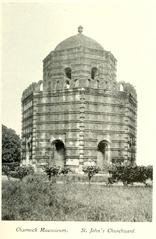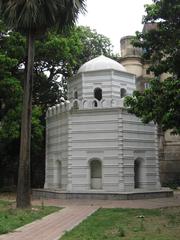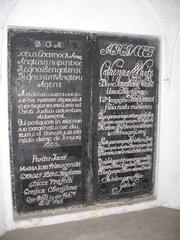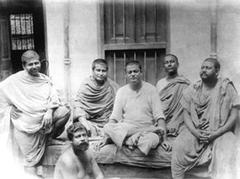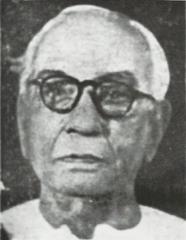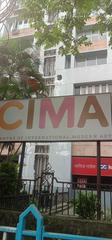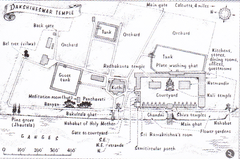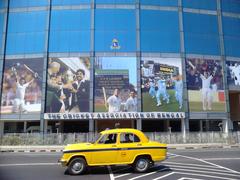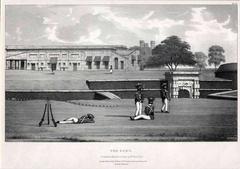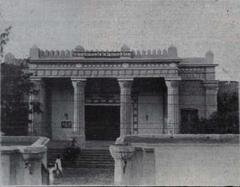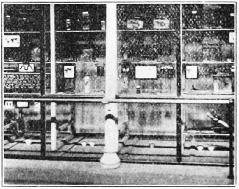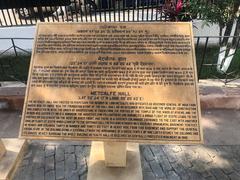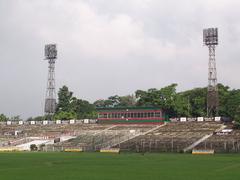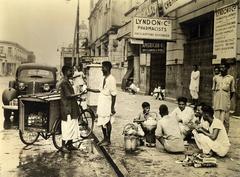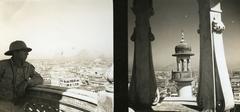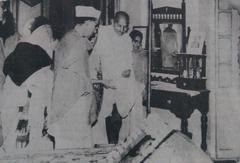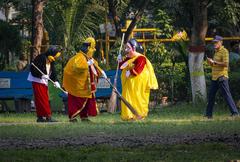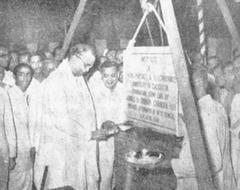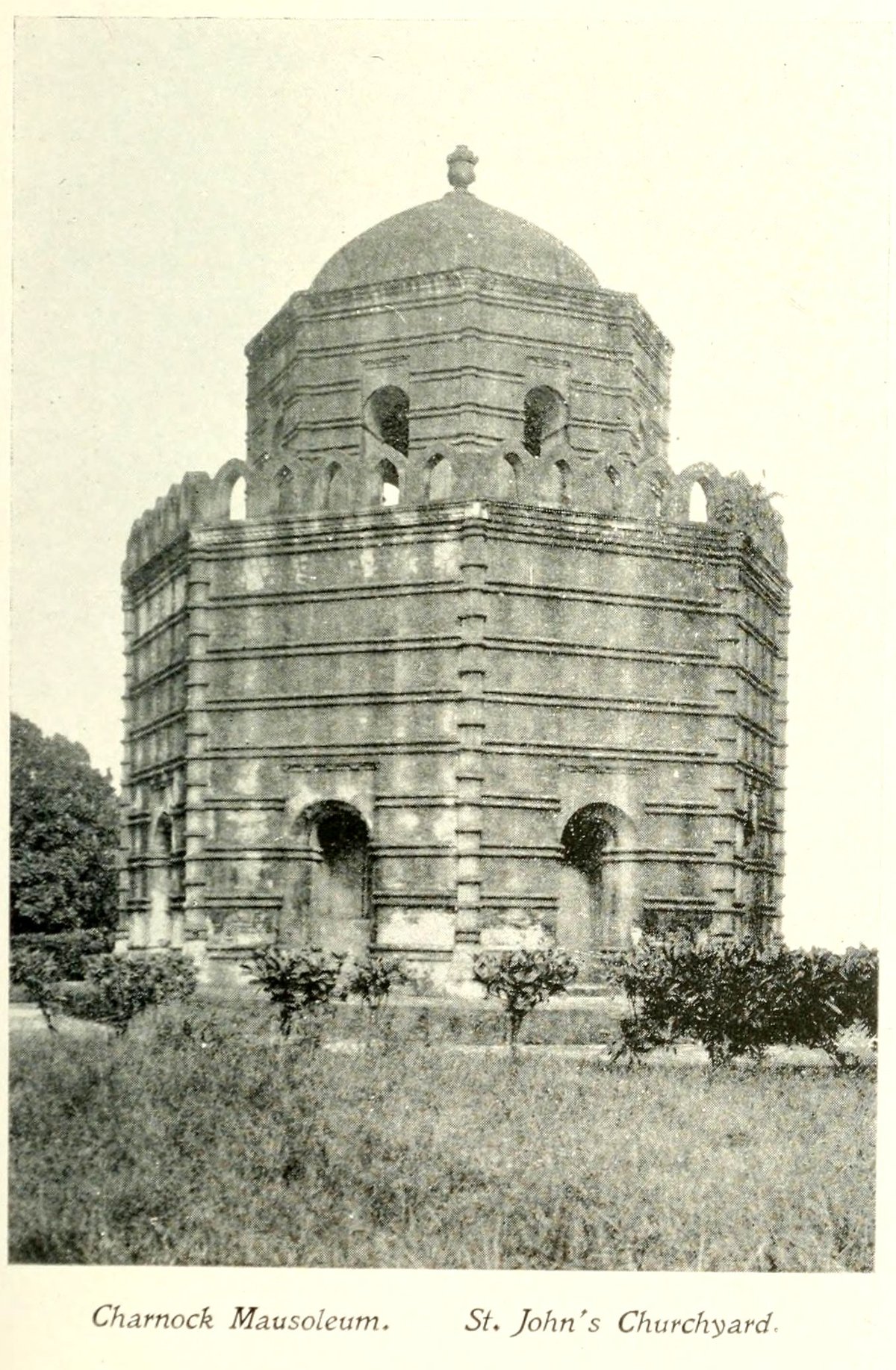
Job Charnock Mausoleum Kolkata: Visiting Hours, Tickets, and Travel Guide
Date: 14/06/2025
Introduction
Nestled within the historic grounds of St. John’s Church in central Kolkata, the Job Charnock Mausoleum is a monument of exceptional historical and cultural significance. Often associated with the British East India Company agent Job Charnock—traditionally credited as the city’s founder—the mausoleum is a focal point for understanding Kolkata’s layered past, from its ancient settlements to its colonial transformation. This comprehensive guide explores the mausoleum’s history, architecture, practical visitor information (including hours and ticketing), travel tips, and nearby attractions, making it an invaluable resource for travelers and history enthusiasts alike.
Table of Contents
- Overview and Historical Context
- Architectural Features and Significance
- Visiting Information: Hours, Tickets, Accessibility
- How to Reach the Mausoleum
- Nearby Attractions and Suggested Itineraries
- Visitor Tips, Dress Code, and Facilities
- FAQ (Frequently Asked Questions)
- Conclusion and Call to Action
- References and External Links
Overview and Historical Context
Kolkata’s Ancient and Colonial Origins
The area now known as Kolkata boasts a history that predates British colonization by centuries. Archaeological finds at Chandraketugarh and references in medieval Bengali literature indicate that settlements thrived here for over two millennia (medialit.in). The Sabarna Roy Chowdhury family, influential local zamindars, played a pivotal role in the region’s early development before the British East India Company acquired rights to the land in the late 17th century.
Job Charnock arrived in 1690 as a Company agent and established a trading post, catalyzing the city’s emergence as a commercial hub (Britannica; Wikipedia). However, after a 2003 Calcutta High Court ruling, it is now officially recognized that Kolkata’s origins predate Charnock’s arrival, affirming the existence of established settlements and vibrant trade in the region (kolkatatrips.com; medialit.in).
The Mausoleum’s Place in Kolkata’s Story
Job Charnock died in January 1693 (old calendar: 1692), and his mausoleum—constructed in 1695 by his son-in-law Charles Eyre—is Kolkata’s oldest British-period monument (kolkatatrips.com; The Hindu). It stands today not only as a memorial to Charnock but as an enduring symbol of the city’s colonial past and its ongoing dialogue with history.
Architectural Features and Significance
Design and Materials
The mausoleum is celebrated for its unique octagonal design, blending Indo-Islamic and colonial architectural elements. Built from Charnockite—a tough, dark granite quarried from St. Thomas Mount near Chennai—the mausoleum is the only structure of its kind in Kolkata using this material. The octagonal shape and whitewashed exterior have drawn comparisons to Moroccan funerary architecture, while the thick walls and Latin epitaphs reflect early colonial tastes (cityseeker.com).
Inscriptions and Symbolic Details
The Latin inscription on the tomb memorializes Charnock and Mary Eyre (his daughter), while notably omitting his Indian wife Maria’s name, reflecting the social attitudes of the era. The mausoleum also houses the graves of other early colonial figures, including Charles Eyre and Mary Eyre.
The Churchyard and Surroundings
Set within the leafy grounds of St. John’s Church—built in 1787 from Chunar sandstone—the mausoleum is surrounded by other significant colonial tombs and monuments, such as the Black Hole Monument and the “Five Tombs,” offering a panoramic view of Kolkata’s colonial heritage (Connecting Heritage).
Geological and Cultural Legacy
Charnockite, the stone used in the mausoleum, is internationally recognized in geology, linking the site to both scientific and historical narratives. The mausoleum’s presence in the city’s historic core (B.B.D. Bagh) marks it as a touchstone for Kolkata’s colonial and postcolonial identities (ASI Kolkata).
Visiting Information: Hours, Tickets, Accessibility
Hours and Entry
- Monday to Saturday: 10:00 AM – 4:00 PM
- Sunday: Closed to tourists (open for 8:30 AM church service only)
- Public Holidays: Usually closed
Entry Fee:
- ₹10–₹20 per person (may vary for foreign nationals or during special events)
- Tickets are available onsite only; no advance online booking
- Entry is free for children below 10; reduced rates for students and seniors
Photography:
- Allowed in the churchyard and at the mausoleum (no flash or tripods inside the church)
- Professional shoots require prior permission
Accessibility:
- Paved pathways to the mausoleum and monuments
- Some uneven surfaces and steps; wheelchair access is limited
- Benches and shaded areas available
Facilities:
- Basic restrooms onsite (drinking water not always available—carry your own)
- No café inside, but several eateries nearby on Council House Street and B.B.D. Bagh
- Souvenirs (postcards, guidebooks) sold by local vendors outside
How to Reach the Mausoleum
Address:
St. John’s Church, 2/2 Council House Street, B.B.D. Bagh, Kolkata 700001, West Bengal, India
Transport Options:
- By Metro: Esplanade Station (approx. 15-minute walk)
- By Bus: Major routes to B.B.D. Bagh/Esplanade
- By Taxi/Auto-Rickshaw: Available citywide; parking is limited
- By Foot: From Victoria Memorial or Park Street, walk east towards Council House Street
Proximity to Key Hubs:
- ~2 km from Howrah Railway Station
- ~17 km from Netaji Subhas Chandra Bose International Airport
Nearby Attractions and Suggested Itineraries
- St. John’s Church: Colonial architecture, stained glass, Zoffany’s “Last Supper,” and the 1824 pipe organ
- Black Hole Monument: Memorial to the infamous 1756 incident
- Victoria Memorial: Iconic museum and gardens, ~10 minutes by car
- Indian Museum: Oldest museum in India, nearby on Chowringhee Road
- Kalighat Temple: Major Hindu pilgrimage site
- B.B.D. Bagh: Historic business district with colonial-era buildings
Suggested Itinerary:
Combine your visit to the mausoleum with a walking tour of B.B.D. Bagh, the Victoria Memorial, and Indian Museum for a comprehensive heritage experience.
Visitor Tips, Dress Code, and Facilities
- Best Time to Visit: October–March for cooler, dry weather; weekdays are less crowded
- Dress Code: Modest clothing (shoulders/knees covered); hats off inside the church
- Etiquette: Maintain silence and decorum; mobile phones on silent; respect active worship times
- Security: Security personnel on duty; remain mindful of personal belongings
- Guided Tours: Available at the entrance or via heritage walk organizers (Calcutta Photo Tours); fees typically ₹200–₹500
- Accessibility: Contact the church office in advance for assistance if required
FAQ (Frequently Asked Questions)
Q: What are the visiting hours?
A: Monday to Saturday, 10:00 AM–4:00 PM; closed Sundays except for 8:30 AM service.
Q: How much is the entry fee?
A: ₹10–₹20 per person; may vary for foreigners or special events.
Q: Is photography allowed?
A: Yes, in the churchyard and at the mausoleum, but not with flash or tripods indoors.
Q: Are there guided tours?
A: Yes, hire at the entrance or book in advance via local heritage walk organizers.
Q: Is the mausoleum wheelchair accessible?
A: Partial—paved paths exist but some uneven ground; assistance recommended.
Q: Can I visit other historical sites nearby?
A: Yes. The mausoleum is close to Victoria Memorial, Indian Museum, and other key sites.
Conclusion and Call to Action
Job Charnock’s Mausoleum is more than a colonial relic—it is a gateway to understanding Kolkata’s rich, multicultural history and evolving identity. Its unique architecture, historical debates, and central location make it a must-visit for anyone seeking to explore the city’s past. Enhance your visit with guided tours, explore the surrounding heritage district, and immerse yourself in the stories that shaped Kolkata.
For the latest information, visit the official church website and consider downloading the Audiala app for guided tours and offline maps. Check out our related articles for more on Kolkata’s historical sites, and follow our social media for updates and travel tips.
References and External Links
- Uncovering Kolkata’s Pre-Colonial Past, 2022, Medialit.in
- Mausoleum of Job Charnock, 2024, Kolkatatrips.com
- Job Charnock’s Tomb, 2024, Cityseeker
- Church where Charnock lies buried faces a grave problem, 2019, The Hindu
- European Calcutta Tour, 2024, Calcutta Photo Tours
- Connecting Heritage: Discovering Calcutta With Its Founder Job Charnock
- ASI Kolkata – Archaeological Survey of India
- Lonely Planet – Mausoleum of Job Charnock
*Images and maps recommended:
Alt text: Entrance of Job Charnock’s Mausoleum, a historic octagonal stone structure in Kolkata.
Alt text: Interior of St. John’s Church displaying a historical painting and pipe organ.
View on Map
Location of Job Charnock’s Mausoleum in Kolkata
For further reading, explore our guides on Colonial Kolkata Architecture and Historic Churches of India.
